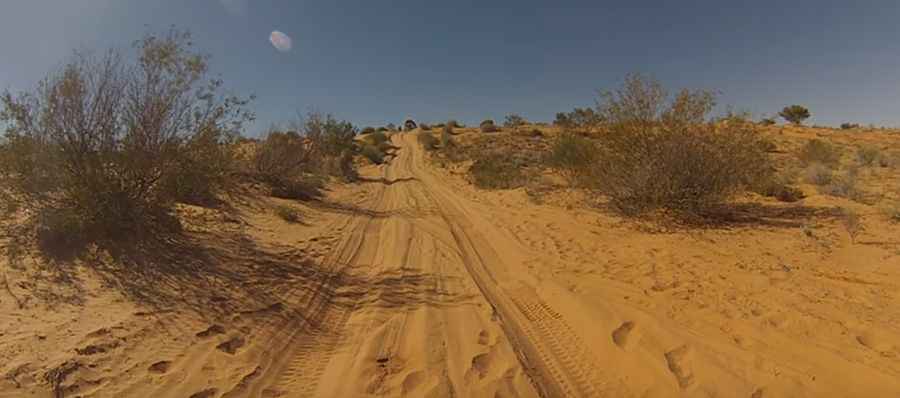French Line is one of Australia’s great touring tracks
Tucked away in the remote Simpson Desert, in central Australia, the French Line is one of the country’s great touring tracks. It’s the most direct track across the desert. There are a number of large dunes to cross, and many of the climbs become degraded during any given season. It’s one of Australia’s best 4WD tracks.

Is there a road through the Simpson Desert?
It’s said to be the shortest and most direct route across the Simpson Desert. The Simpson is the driest region of Australia and a dunal desert, crossing through breathtaking landscapes, colorful flora, and varied fauna. Expect to cross over 1200 red sand dunes and to feel as far removed from civilization as you’re ever likely to be. Most of the dunes are not too difficult to tackle, but there are just so many of them that you’ll need to be cautious to avoid vehicle damage.
Why is it called the French Line?
The road, also known as the Shot Line, is named after the French Petroleum Company, which put the line in 1964. It runs partly through South Australia and Queensland.
How long is the French Line?
The road is 262 km (162 miles) long, running east-west from Poeppel Corner to Dalhousie Springs. It’s totally unpaved. It’s a very demanding track as it normally has very soft sand.
When is the best time to drive the French Line?
Keep in mind the Simpson Desert is closed between December and mid-March due to the summer temperatures. While in the desert, self-sufficiency is essential. Take emergency supplies and extra parts; make sure you know your route. The best time to be in the Simpson Desert is April to October when the daytime temperature will be comfortable. Carry at least seven liters of water per person per day, and emergency food and water for 7 days.
Is the French Line difficult?
The drive is not easy. It’s only single lane wide, and crossing the dunes can be challenging, especially when they are rutted out and bumpy in places. The road is slow going all the way (15–20 km/h). You need an equipped heavy 4WD with plenty of extra fuel, water, and a powerful UHF CB Radio and ideally a satellite phone or emergency GPS rescue beacon. Remember to drop your tire pressures. There are numerous salt lake crossings. When these are dry, they have a very firm base; however, when wet, they can become very sticky. In some cases, they are impassable, in which case you will have to make numerous detours to the north. Trailers of any kind are not recommended on the French Line. Plan about 4 days to complete the drive. Minimize the weight your vehicle will carry wherever possible; this will lower the risk of damage, improve fuel consumption, etc.
Pic: Brett Fisher